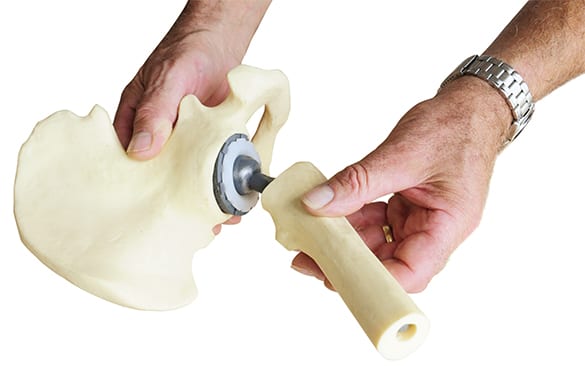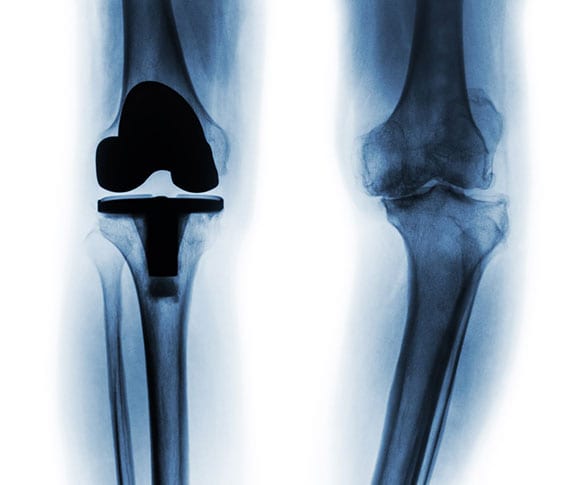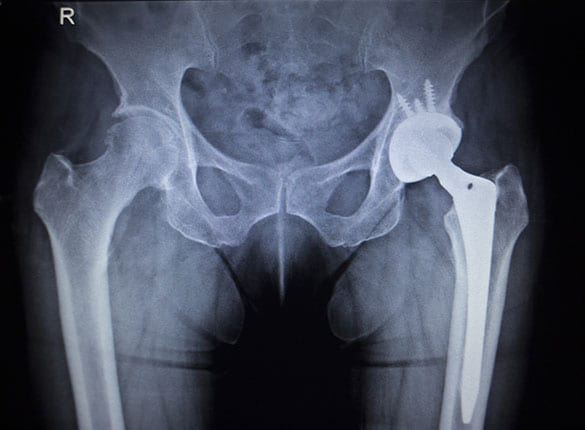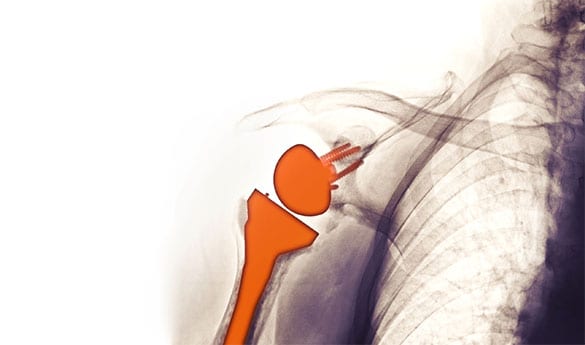
Total Joint Replacement with LA Orthopedic Group is a way to resume normal activities with confidence.
As crucial as they are to your everyday function and mobility, your joints are not designed for durability and longevity. Factors like aging, weight gain, arthritis or working a physically demanding job can take their toll on your joints and cause them to sustain significant damages. Outpatient total joint replacement is often performed on:
- Hips
- Knees
- Shoulders
CONTACT US TODAY
What it Is
Joints are strong and often resilient, but not indestructible. When joints become damaged from conditions like arthritis or from an injury, conservative treatments may not do enough to restore normal function or the preferred level of stability.
Total joint replacement is a surgical procedure that involves removing a joint damaged by arthritis or injury. The damaged joint is replaced by a prosthesis crafted by metal, plastic, or ceramic. When the damage to your joints can no longer heal on their own or with minor medical intervention, you may need to undergo total joint replacement surgery.
Close to one million of these surgeries are performed each year in the U.S. alone. The procedure is typically performed on the knees or hips. However, it can also be done on the wrist, ankle, or elbow if required.


How it’s Done
Due to medical developments, total joint replacement surgery can be performed as an outpatient procedure. During the procedure, your surgeon will remove your damaged joint and replace it with a metal, plastic, or ceramic prosthesis. The surgery can last anywhere from one to two hours.
Joint replacement tends to be recommended for patients who still have one stable joint. It’s still possible the other joint may need replaced in the future, but duel joint replacement isn’t usually done at the same time. Generally, the best candidates for arthroscopy are active individuals under forty. However, older adults who are in otherwise good shape may also benefit from arthroscopic joint replacement.
Total Knee Replacement
As the largest and most prominent joint in the body, the knee is susceptible to injury from sports-related activities, overuse injuries, and hard impacts. Damage to the hinged (synovial) knee joint can also occur from age-related wear and degenerative conditions like arthritis.
With total replacement of the knee joint, damaged cartilage surfaces at the ends of the tibia (long leg bone below the knee) and the femur (thigh bone) are removed. Replacement components made of strong plastic, metal alloys, and ceramic materials are then inserted in a way that resembles the original knee joint. The patella (kneecap) will be temporarily moved out of the way. A space is inserted between artificial components to allow for smooth movement of the replacement joint.
Replacement is typically recommended for patients with limited movement, chronic inflammation of the knee, and difficulty maintaining stability when walking, running, or placing weight on the joint when standing. The majority of the 700,000 knee replacements performed each year in the United States each year are done with arthroscopic techniques.


Total Hip Replacement
Held in place by muscles, ligaments, tendons, and a joint capsule, the hip joint is the largest ball-and-socket joint in the body. It’s also a joint that consistently bears a significant amount of weight and plays a central role in daily movement. Both parts of this joint may become damaged due to injury, gradual wear, or from diseases that contribute to inflammation.
The “ball” (femoral head) is removed and replaced with an artificial stem during hip replacement surgery. An artificial bone is placed on the top part of the stem that’s attached to the adjacent bone. A metal socket is then used to replace the damaged part of the socket. A spacer is inserted to minimize friction. Hip replacement is usually recommended when patients are experiencing:
- Pain from bone-on-bone arthritis
- Increased pain associated with daily movements
- An inability to maintain optimal athletic performance
- Discomfort that’s not going away with conservative treatments
Total Shoulder Replacement
Also a ball-and-socket joint, the shoulder is made up of the humerus (upper arm bone), scapula (shoulder blade), and clavicle (collarbone). Smooth movement of all three of these parts is essential to preserve natural range of shoulder and arm motion. The shoulder joint may become damaged due arthritis, age-related wear, a rotator cuff injury, or a fracture (break in a bone).
If other treatments are failing to provide relief or movement of the shoulder joint is severely impaired, total replacement of the shoulder joint may be recommended. Often performed arthroscopically with special instruments and smaller incisions, the procedure typically involves replacing both parts of the joint with artificial components. Some patients may only need to have one part of the shoulder replaced.


Recovery
During your recovery, it is important that you follow up with your surgeon and only put weight on or add movement to your joint as your doctor recommends. If you follow your doctor’s post-operative instructions, you should be able to resume your normal life within two to three months after your surgery.
Whether it’s your knee, shoulder, hip, or another joint that’s causing persistent pain for you, it doesn’t hurt to see if total joint replacement may be right for you, especially if other attempts at pain relief haven’t produced the desired results. Joint replacement surgery is widely considered to be a safe procedure with minimal risks, and it’s also a less invasive option thanks to advances in technology. If you’re like other patients who have successfully had a joint replaced, you’ll likely appreciate the ability to move freely and participate in favorite activities without distracting discomfort.




